The ice dam cometh. Are you ready?

Media: Boston Globe
Link: The ice dam cometh. Are you ready?
After the winter we had, our motto became: “Ice dams be damned.”
My husband and I spent the summer with a parade of roofers and insulation contractors trying to figure out how to prevent our home from being ringed by icicles again.
We had icicles everywhere: the front, the side, the back. They stretched from 2 inches to two stories tall. One time I got so annoyed at one that I tried to knock it down with a snow shovel. I nearly got speared. Don’t ever try this at home.
But the icicles weren’t just a nuisance. They were destroying the house. They were the telltale signs of ice dams, which form during periods of heavy snowfall followed by a stretch of freezing temperatures.
WHERE AIR GETS IN
(INSULATION, IN PURPLE, NOT SHOWN IN MOST CASES TO HIGHLIGHT AREAS PRONE TO AIR LEAKS)
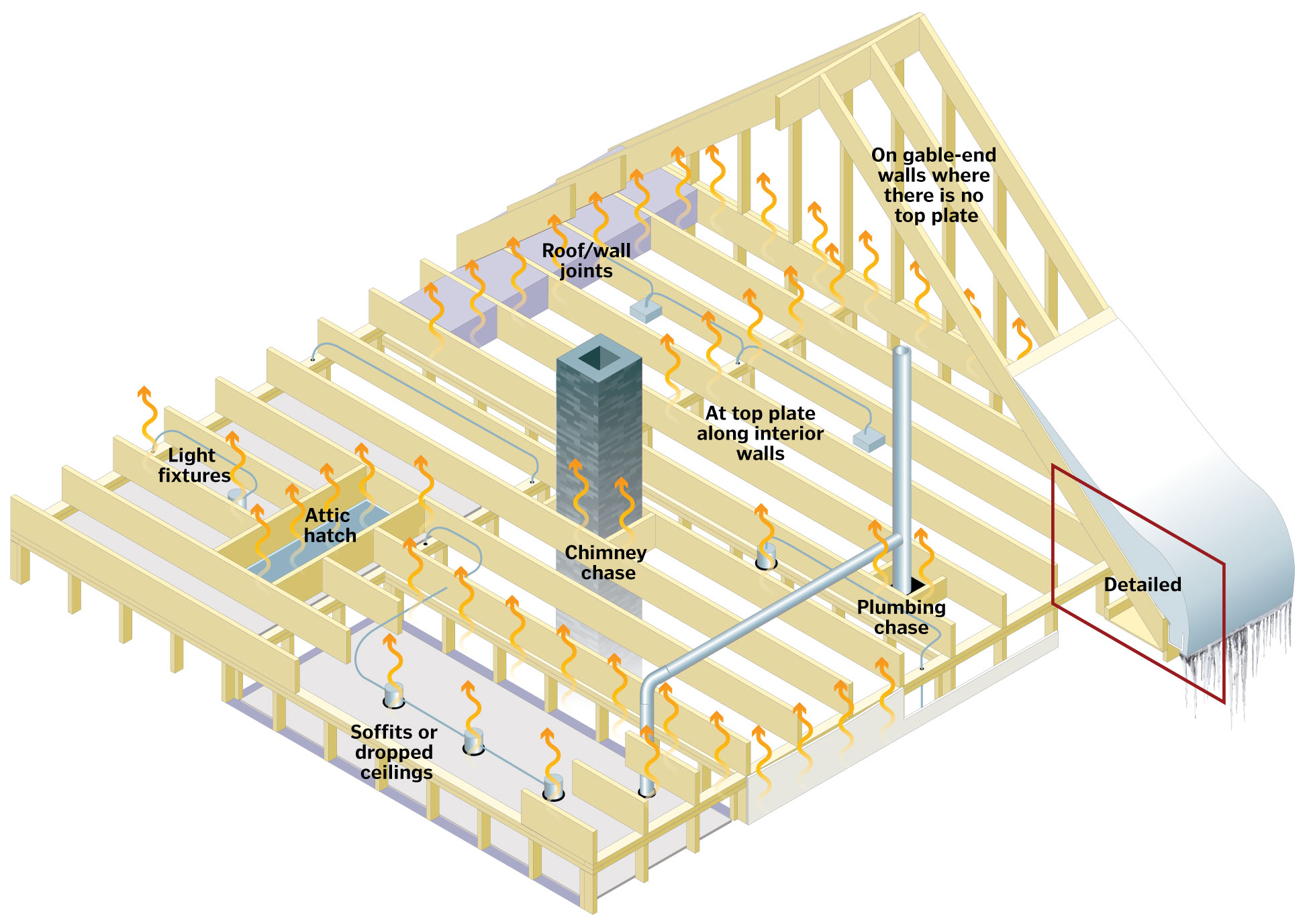
SOURCE: Adapted from “Insulate and Weatherize for Energy Efficiency at Home,” by Bruce Harley, 2012, The Taunton Press – JAMES ABUNDIS / GLOBE STAFF
The heat in your house rises and escapes through the attic, and it melts the snow on your roof. When the melted water flows to the edge of your roof, it will refreeze and form icicles. If this keeps happening, your house will probably develop an ice dam. That means water will back up under the shingles and then try to find a way out, usually inside your house.
In our case, we went from icicles everywhere to water everywhere. We had leaks in the bedrooms and the living room, but the worst was in the kitchen, where gallons of liquid dripped through the ceiling. Buckets and towels became the new décor.
We were actually glad to see water. We had drilled holes in the ceiling so it could drain; otherwise we feared the ceiling would collapse from the weight of trapped liquid.
By the end of February, even Governor Charlie Baker admitted that ice dams were plaguing his Swampscott home. He and his wife, Lauren, tried to shovel the snow off the roof but to no avail.
“At some point, it’s just easier to do the buckets,” Baker said on WGBH-FM’s Boston Public Radio.
My husband and I finally cracked, and one Google search later we found an outfit called the Ice Dam Guys. The company was one of those traveling crews from Minnesota that had descended on Massachusetts to steam off icicles. The dripping stopped, but at a steep cost: $1,900.
At the very least, we had peace of mind the rest of the winter. No more icicles, no more leaks. Our insurance covered the cost of repairing and repainting our kitchen, but not the ice dam removal.
HOW ICE DAMS FORM
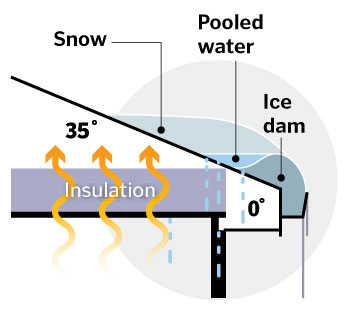
Warm house air leaks into the attic and melts roof snow. Colder eaves or soffits refreeze the snowmelt, creating an ice dam.
Snowmelt backs up under roof shingles, finds cracks in the roof, and can leak into the home.
PREVENTING ICE DAMS
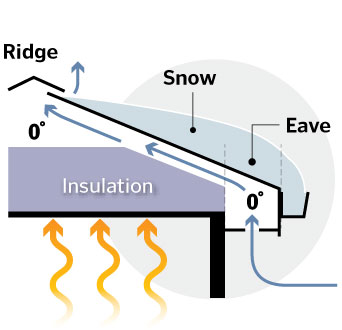
Adding attic insulation and sealing potential air leaks helps reduce home heat loss to the attic.
Adequate airflow from the eaves to the roof’s ridge prevents snow from melting and ice dams from starting.
In terms of preventing ice dams, that would all be on us, too. We knew we had to attack the problem on two fronts: the roof and proper insulation.
The roof on our Colonial wasn’t that old, so we didn’t worry about having to replace it. But a previous owner had put on an addition, and we suspected the trouble spots were where the old and new house meet.
Given the way the sun hit our home, the kitchen roof — which is separate from our main roof — seemed most susceptible to ice dams. We had had icicles form over that section (complete with leaks) a few years ago.
The roofers came and went, leaving us with all sorts of proposals that would cost anywhere from $500 to $4,000. Some suggested installing commercial gutters on the back side of our house. Others recommended fortifying the kitchen roof with an ice barrier or electric heating coils. Another told us our roof was just fine; there was already a membrane underneath.
We concluded that we didn’t need an expensive fix. We spent $500 to install flashing in problem areas. We had a roofer put in strips of metal around a gutter that sits between the main roof and a secondary roof, as well as around vent pipes. The flashing would do nothing to prevent ice dams, but it would provide another layer of protection during the Storm of the Century, Take Two.
SEALING LEAKS IN YOUR ATTIC
Larger openings require making rigid-foam insulation pieces before sealing them in place with spray foam. Drywall boxes can also be made to cover recessed lights.
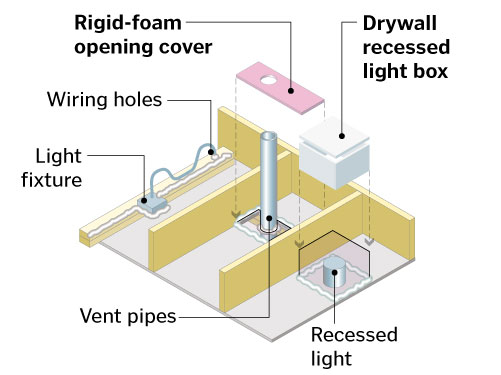
Next up: insulation. Our first step was to call Mass Save, an energy audit program set up by the state, funded by ratepayers, and administered by the major utility companies. A guy came out to poke holes in our walls and inspect our attic. The verdict: Yep, we need a lot more insulation.
We weren’t the only ones trying to stay dry and warm. Because of the bad winter, Eversource, our electric company, told me that requests for home-energy assessments surged 22 percent between February and April compared with the same period in 2014.
Insulating both the walls and attic typically costs homeowners $6,000 to $10,000, says Bruce Harley, a senior manager at CLEAResult, which runs energy-efficiency programs, including one as Eversource’s lead vendor for Mass Save.
“If it were me, do the attic first,” said Harley, who lives in the Berkshires and has also written two books on energy fixes for homes. “That is going to affect your ice issues more.”
Our unfinished attic needed help. For insulation, we had fiberglass batts (the pink fluffy stuff) on the floor and in the sides. While many houses use fiberglass because it’s inexpensive, it clearly wasn’t doing the job.
We needed the good stuff. That meant looking at blown-in cellulose or spray foam.
A quick primer: Cellulose insulation is made up of recycled newspapers or ground-up cardboard and other sources of wood fiber that are treated with a flame retardant. It can be blown into your walls and your attic, where it settles on the floor and into gaps. You should seal the attic and ductwork before you insulate.
Spray foam is made of plastic and is the priciest option. There are two kinds: open and closed cell. Open cell has less insulating power than closed, but it is not as expensive. People use spray foam in complex attic floor plans and where they’re looking to finish the space.
In our case, various contractors told us that going with cellulose or spray foam was a matter of preference; it had little to do insulation, but rather how we wanted to use our attic.
If we chose cellulose, we could no longer keep stuff up there because the insulation would be everywhere. If we chose spray foam, we could continue to use the attic for storage.
We were torn, and here’s why: Mass Save offers a discount of up to $2,000 for cellulose. Large-scale foam spray insulation is not covered.
It felt wrong to leave thousands of dollars of money on the table; the cellulose job using Mass Save would cost about $2,200. Foam spray would be nearly double the price, but we like having the extra space.
I decided to get a second opinion from somebody who just went through his own ice dam-prevention plan: former state energy secretary Ian Bowles.
Bowles has done this twice — once at his old home in Jamaica Plain and more recently at his new house in Dover. He also penned a Globe Op-Ed about fighting ice dams.
Bowles is a big fan of foam spray. He has used both open and closed cell in his homes. The foam spray is costlier, but if you’re serious about defending your house against ice dams, it’s worth the price, he said.
When writing that bigger check, he advised, just tell yourself: “I am determined to stare down the ice dam enemy and never see it again.”














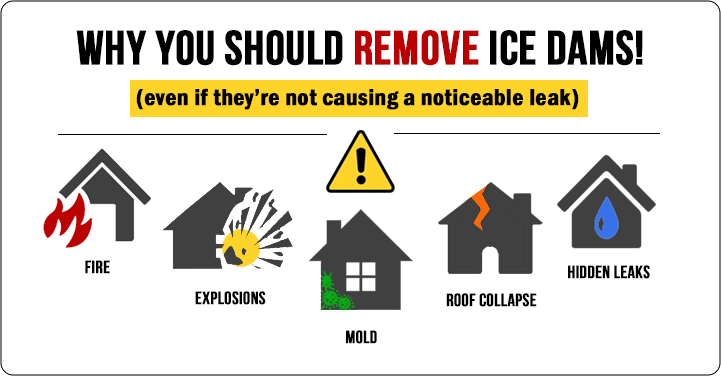
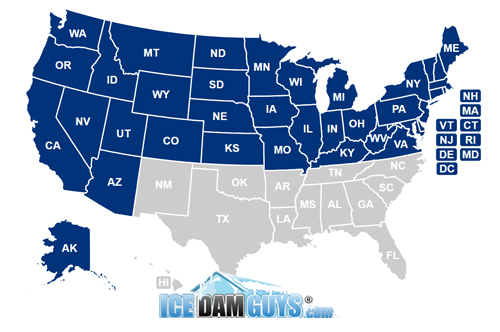






No comments yet. You should be kind and add one!
Leave a Comment